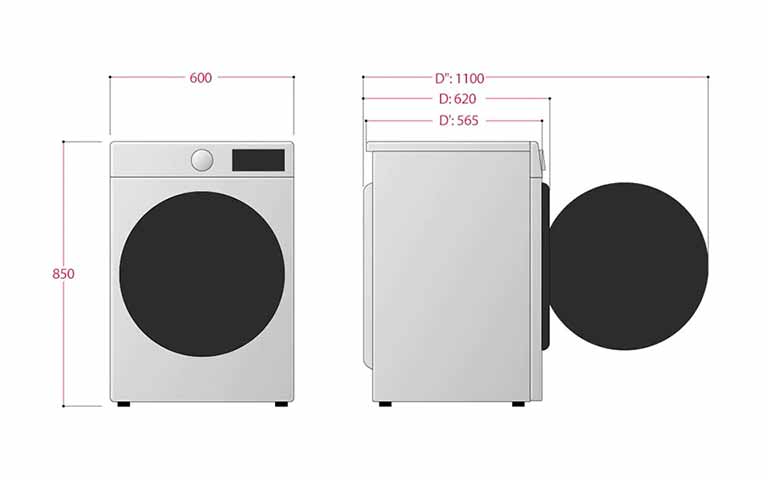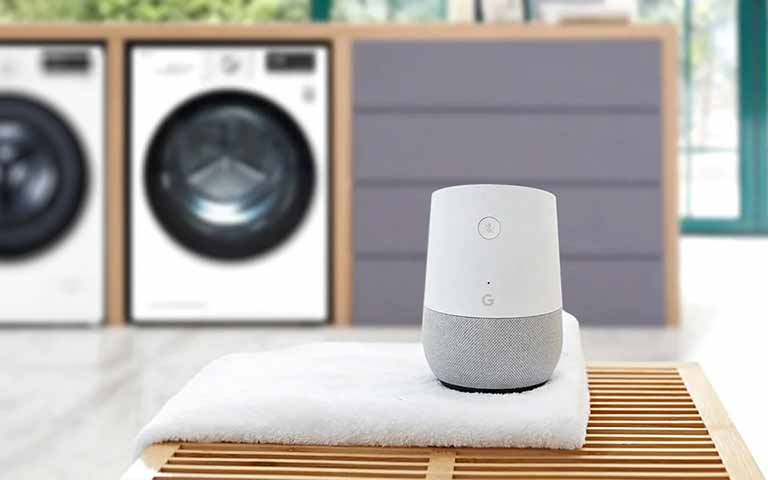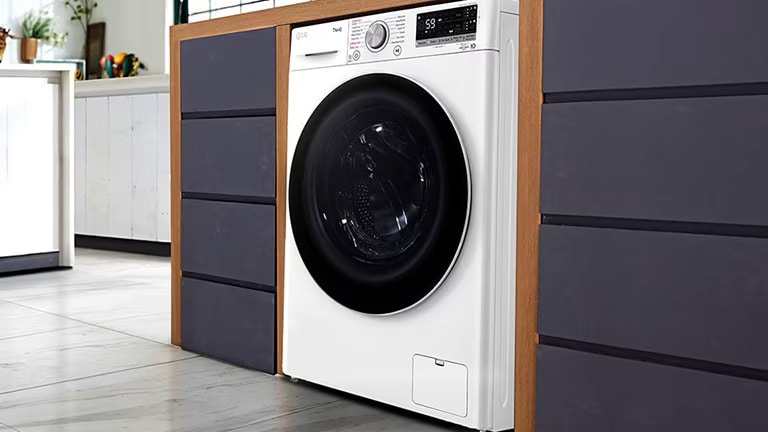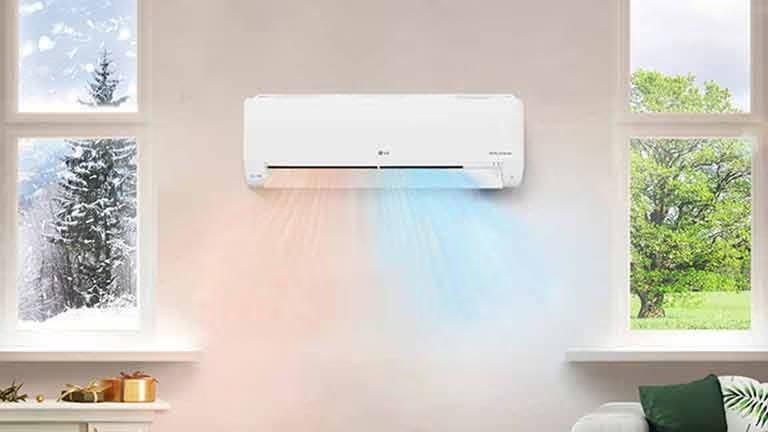We use cookies, including cookies from third parties, to enhance your user experience and the effectiveness of our marketing activities. These cookies are performance, analytics and advertising cookies, please see our Privacy and Cookie policy for further information. If you agree to all of our cookies select “Accept all” or select “Cookie Settings” to see which cookies we use and choose which ones you would like to accept.
Buying Guides
Washing Machine Buying Guide
Washing Machine Buying Guide
Washing Machine Buying Guide
When it comes to choosing a washing machine, there are a few things to consider. Whether you’re replacing your old machine or looking for an upgrade, there are so many options out there that it can be difficult to know what’s the best one for you. Luckily, we’ve put together a handy buying guide to help you decide.
Different Types of Washing Machines
Before shopping around, it’s worth familiarising yourself with the different models that are available. At LG we have a range of washing machines, and you may find that some types are better suited to your needs than others. Below, you’ll find an explanation of each to help you determine which model will work best in your home.
Front Load Washer
Front Load Washer
Front loader washing machines have an opening that’s located at the front of the machine; LG’s front loader washing machine’s door is made of tempered glass allowing you to monitor the progress of each wash cycle. These models have a separate detergent drawer located at the top of the machine.
TWINWash™
TWINWash™
Our LG TWINWash™ allows you to wash two separate loads at the same time, making them a time-efficient option for busy families. The large capacity top section can be used to wash your regular load or heavily soiled items on a hot or cold wash; the lower section has a smaller capacity, and can be used to wash lightly soiled garments but can only run cold wash. The large capacity top section sits higher up than the opening on a typical front loader washing machine as it is sitting on top the LG TWINWash™ Mini.
Top Load Washer
Top Load Washer
Top loader washing machines come with an opening at the top of the machine, rather than at the front. There typically isn’t a separate detergent drawer; you simply add detergent in with your load.
Combo Washer Dryer
Combo Washer Dryer
If you’re short on space or just want one machine that does it all, you should consider buying a washer dryer combo. They’re also a good option if you don’t have the outside space to hang your laundry to dry. These machines often come with the same features as standalone washing machines, but with the added functionality of a tumble dryer.
WashTower™
WashTower™
If you’d prefer to have a separate washer and dryer, but still want to maximisze space in your home, our WashTower™ machines are a great option. These all-in-one machines take the form of stackable models, so they take up space vertically, rather than horizontally. They come with one central control panel that’s conveniently located, so you don’t have to reach up or bend down to use your machine.
What Size Washing Machine Do I Need?
What Size Washing Machine Do I Need?
You should check the width, height and depth of the washing machine you’re looking at, and compare this against the space that’s available. You’ll find these measurements in the product specifications.
Remember to factor in clearance space too: it’s recommended that you leave a 10cm gap at the back and 2cm on either side when installing a washing machine. This helps to accommodate piping, and allows air to circulate behind the machine.
Understanding Capacity
The capacity – or drum size – of a washing machine determines how much laundry it can hold. The higher capacity a machine has, the more you’ll be able to wash in one load. Although the capacity will vary depending on what you’re washing (think about the difference between a t-shirt and a duvet, or 5 cotton t-shirts vs. 5 pairs of jeans), 5 t-shirts equates to roughly 1kg.
At LG, we have a range of different capacities available. We’ve outlined these below to help you work out which size may best suit your needs.
Small (up to 7.5kg)
Our small capacity machines range from 6.5-7.5kg. These models are suitable for one- or two-person households.
Medium (up to 9.5kg)
Our medium-sized washing machines are great for couples or an average size family.
Large (10 - 11kg)
Larger 10-11kg washing machines are perfect for larger families or average households who have more weekly laundry to get through.
Extra Large (12kg+)
Our largest machines have a capacity of over 12kg. These are ideal for large households who have lots of laundry to do each week.
Features to Look for in a Washing Machine
Today, our washing machines come with an array of features designed to make light work of your laundry. Below are some of the most innovative features you’ll find on selected LG machines.
ezDispense™
Our ezDispense™ feature detects weight of the load and releases the preset amount of detergent for the wash, so you only need to fill the dispenser once for multiple loads; you’ll also be notified if a refill is needed. There are separate detergent and softener reservoirs which can be used individually or linked, giving you the flexibility to store two different types of detergent for use depending on the wash.
TurboWash™360°
The LG TurboWash™360° feature allows you to wash a 5kg load of lightly soiled clothes in just 39 minutes*. Water jets operates during the wash and rinse for a thorough and even clean, cutting the cycle time without compromising on performance. And, because the TurboWash™360° feature uses less water in less time*, our TurboWash™360° models are designed to be more energy-efficient too.
* Tested by Intertek, based on IEC 60456 : edition 5.0. TurboWash39 cycle with 5kg of IEC load compared to Conventional Cotton Cycle with TurboWash (F4V9RWP2W vs. FC1450S2W).
*The results may be different depending on the environment.
Pause and Add Item
Some of our washing machines allow you to pause a cycle and add more garments mid-wash. This handy feature lets you throw in any laundry items you left behind – from spare socks to big blankets – without affecting the quality of your wash.
AI Direct Drive (AI DD™)
Our Artificial Intelligence Direct Drive (or AI DD™) utilises the latest innovations in technology to care for your washing, whilst using water, energy and time more efficiently. For multiple load settings, AIDD® detects the weight, and automatically selects the optimal wash motions suitable for the load.
LG ThinQ™
LG ThinQ™
LG ThinQ™ enables smart home connectivity across a range of devices, including selected washing machines. Models with this feature can be controlled and monitored remotely using the ThinQ™ app*. You can also track your cycle history, diagnose and troubleshoot any issues, and download additional cycles for specific garments – all via your smartphone or smart speaker!
*LG ThinQ™ app is available on Android or iOS smartphones. Compatible smartphone with Android 4.1.2 (Jellybean) or later or iOS 9 or later required for LG ThinQ™ app. Phone and Home Wi-Fi Data connection and product registration on the ThinQ™ app required. Smart features and voice assistant product may vary by region and model. Check with your local retailer or LG for service availability. Features and services may be changed by LG without notice. Google and Google Home are trademarks of Google LLC. Amazon, Alexa, Echo and all related logos and motion marks are trademarks of Amazon.com, Inc or its affiliates. Voice-enabled smart speaker device is not included.
Washing Machine Programs Explained
It’s a good idea to get to grips with the wash programs that are available, so that you know your new machine will meet your needs. You can download a huge number of cycles for selected models using the LG ThinQ™ app; below, we’ve set out some of the most common programs you’ll come across as standard.
Cotton
This setting is designed for cotton fabrics and for normally soiled clothes. It can also wash more heavily soiled cotton items on a higher setting.
Cotton Eco
Eco modes use less water and a lower temperature, making this program more energy efficient than other modes. It can be used for light to normally soiled clothes.
Mixed Fabric
Choose this setting for loads with mixed fabrics; it can be used to clean most fabrics except delicates like silk, wool, sportswear, duvets and curtains.
Easy Care
This setting can be used for clothes that don’t need ironing after washing, such as polyamide, acrylic and polyester fabrics. Remember that synthetic fabrics like these should be washed at 40°C or less, since they’re more delicate than cotton.
Quiet Wash
Select this cycle if you want a quieter spin with less vibration.
Allergy Care
Allergy Care cycles help to reduce exposure to allergens from clothes*; you’ll notice the Steam+™ feature on selected LG washing machines, too. This setting heats up water in the load to create steam, which in turn opens up the fabric fibres to help to reduce exposure to common household allergens.
*Different LG Washing Machines with Allergy Care cycles reduces exposure to different types of allergens, please check the product page of each LG Washing Machine for more details on each Allergy Care cycles.
Wrinkle Care with Steam+™ (Refresh)
Like our Allergy Care cycles, the Wrinkle Care setting uses steam to streamline laundry day. After completing a wash, it produces steam and uses special drum movements to reduce creases in your clothes.
Delicates
This cycle washes at a lower temperature, to care for delicate garments such as underwear and blouses, or any other items that may be damaged in a regular wash.
Hand/Wool
This cycle targets care for machine washable knitwear and other items you’d usually wash by hand using this cycle, which launders at a lower temperature than a regular wash.*
* Regular Cotton cycles is 40ºC and Hand/Wool is 30ºC
Sportswear
Remove sweat marks and odours from sports and outdoor clothing with this cycle. It washes for longer at lower temperatures, to give heavily soiled sportswear a thorough clean without damaging the fabric. If you have garments made from specialist fabrics like COOLMAX®, GORE-TEX, fleece or Sympatex, choose this cycle.
Duvet
This cycle is designed to clean larger textile items such as bed covers and pillows.
Dark Wash
If you have clothes that may fade in a regular wash, select this cycle. You can wash cottons or mixed fabrics on a dark wash, but you should use a detergent that’s formulated for coloured fabrics.
Quick 30
If you’re short on time, the Quick 30 setting will clean small loads and lightly soiled garments in around 30 minutes.
Intensive 60
This setting washes at 60°C for 60 minutes, giving an intense clean that’s still designed to be energy efficient.
Washing Machine Maintenance
Washing Machine Maintenance
With proper care, your washing machine should last for a long time. Simple things like not overloading the drum will help to keep it in good condition. You should also clean your machine fairly regularly to stop bad smells and mildew from developing.
How to Clean a Washing Machine
Cleaning the Drum
Some of our washing machines come with a ‘Tub Clean’ cycle, which is designed to clean the drum; run this cycle about once a month to remove any residue or detergent buildup.
If your washing machine doesn’t have this feature, you should still carry out a monthly maintenance wash, whether you have a front load or a top load washer. To do this, empty the drum before wiping it down and running a hot cycle; for a deeper clean, use a specially formulated cleaning solution. When the cycle has finished, wipe away any debris or water, and leave the door open until the machine has dried.
Cleaning the Detergent Drawer
The detergent drawer on front load washing machines should also be cleaned whenever you do a maintenance wash. Simply pull out the drawer fully and wash it with warm, soapy water; then rinse and dry it off properly before slotting it back in your machine.
Cleaning the Filter
Front load washerhave a drain pump filter, which you can usually find underneath the door at the front of the machine. The filter collects lint and other debris, so you should clean them regularly – on a monthly basis if you can. To do this, follow the steps below:
1. Once you’ve located the access panel, pull it down to reveal the drain hose and drain pump filter. Have a shallow container prepared to collect the drained water.
2. Remove the pump filter by turning it.
3. Remove any lint and debris from the filter.
4. Wash the filter by hand to get rid of any grime or buildup.
5. Reinsert the drain pump filter and close the access panel.
Both top loaders and front loaders have inlet filters, and these can also become clogged over time.
On top loader washing machines, you’ll find the inlet filters located inside the drum. Simply remove and empty the filters, before washing them by hand; you can gently scrub them with a small brush to remove any stubborn grime.
To clean the inlet filter on a front loader, you’ll first need access to the back of your machine. Unplug your machine and turn off the water tap, then unscrew the water inlet hose; remove and clean the filter by hand using a small brush, before inserting it back into the front loader.
Take care of your favourite clothes with a little help from LG. Discover our full selection of washing machines in store now; we also have an extensive range of clothes dryers available online.











